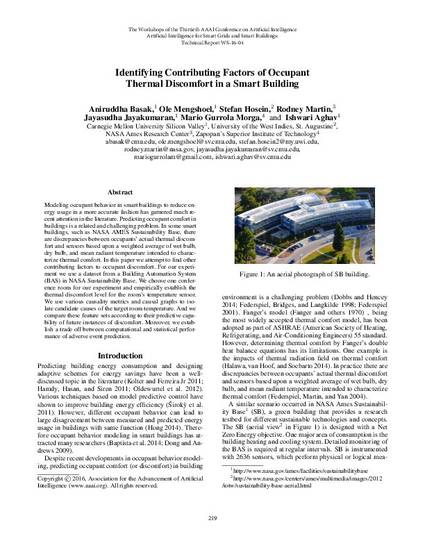
Article
Identifying Contributing Factors of Occupant Thermal Discomfort in a Smart Building
AAAI Workshop: AI for Smart Grids and Smart Buildings 2016
(2016)
Abstract
Modeling occupant behavior in smart buildings to reduce energy usage in a more accurate fashion has garnered much recent attention in the literature. Predicting occupant comfort in buildings is a related and challenging problem. In some smart buildings, such as NASA AMES Sustainability Base, there are discrepancies between occupants’ actual thermal discomfort and sensors based upon a weighted average of wet bulb, dry bulb, and mean radiant temperature intended to characterize thermal comfort. In this paper we attempt to find other contributing factors to occupant discomfort. For our experiment we use a dataset from a Building Automation System (BAS) in NASA Sustainability Base. We choose one conference room for our experiment and empirically establish the thermal discomfort level for the room’s temperature sensor. We use various causality metrics and causal graphs to isolate candidate causes of the target room temperature. And we compare these feature sets according to their predictive capability of future instances of discomfort. Moreover, we establish a trade off between computational and statistical performance of adverse event prediction.
Keywords
- smart buildings,
- occupant comfort,
- sustainability,
- machine learning,
- building automation system,
- prediction
Disciplines
Publication Date
February 12, 2016
Citation Information
Aniruddha Basak, Ole J Mengshoel, Stefan Hosein, Rodney Martin, et al.. "Identifying Contributing Factors of Occupant Thermal Discomfort in a Smart Building" AAAI Workshop: AI for Smart Grids and Smart Buildings 2016 (2016) p. 219 - 225 Available at: http://works.bepress.com/ole_mengshoel/77/
